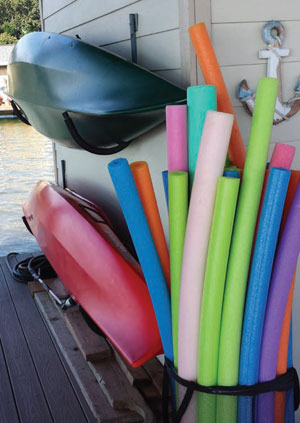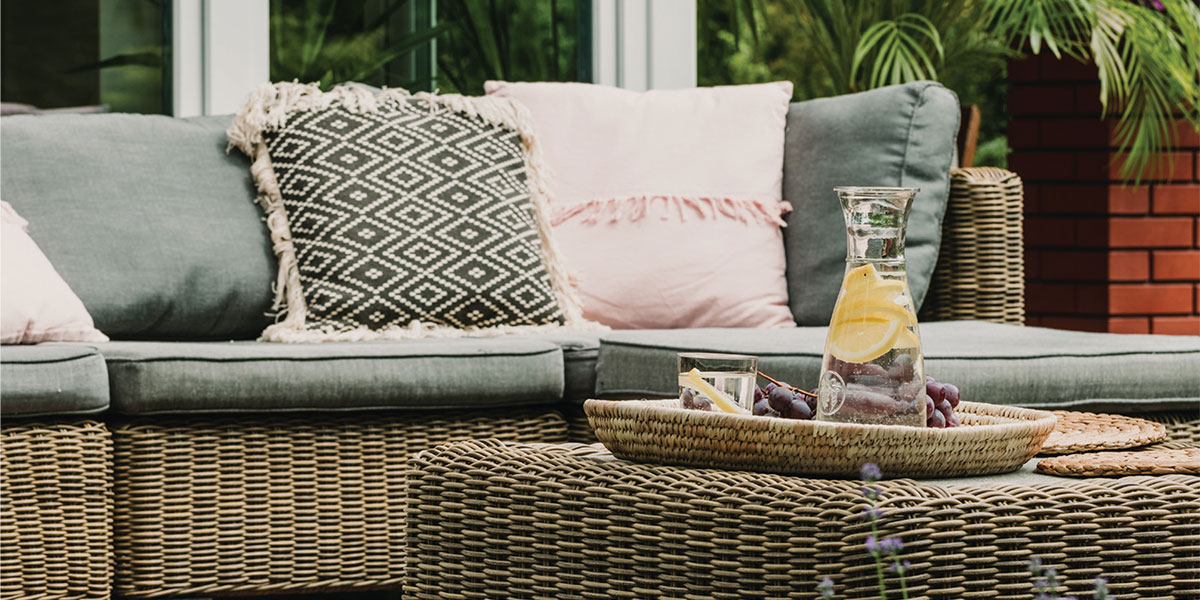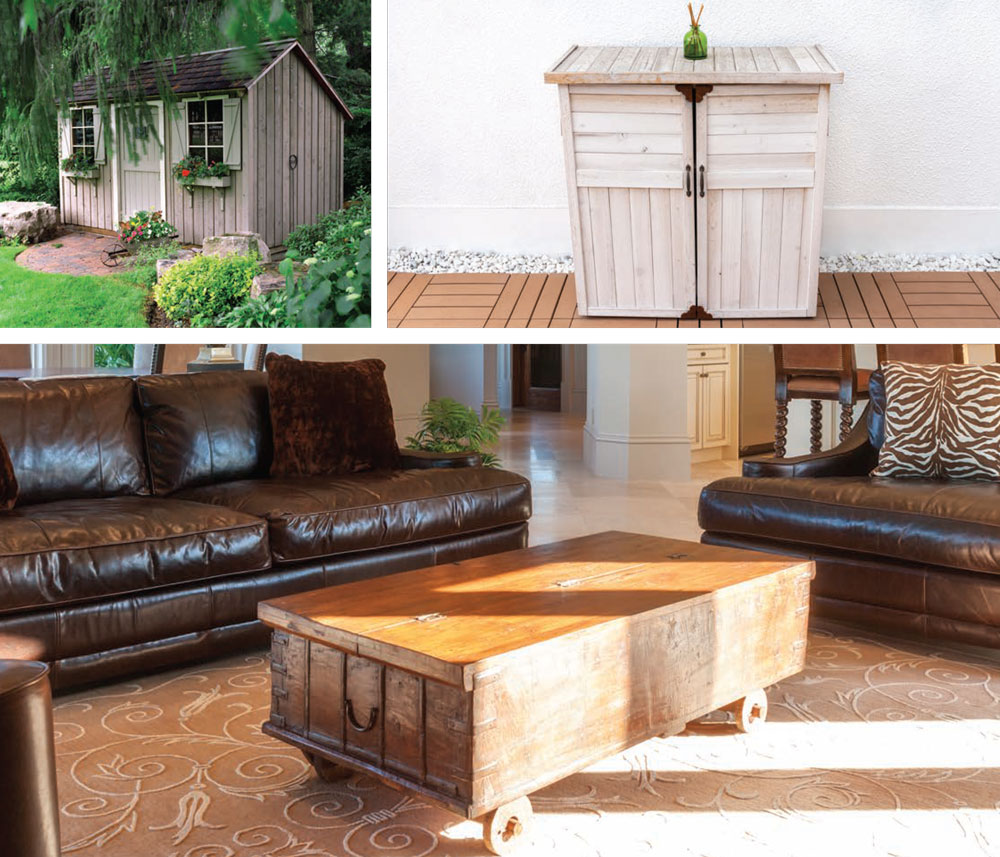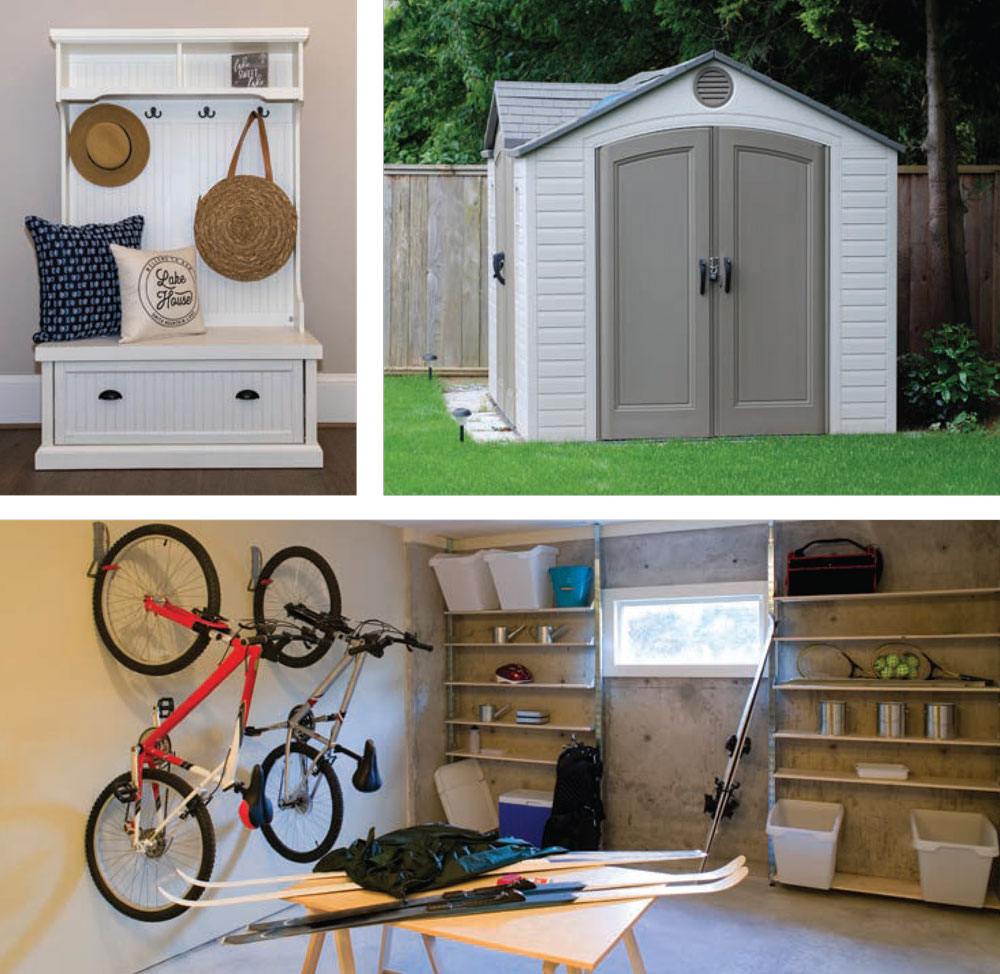Lake days mean making the most of the great outdoors. Whether you’re gathering on decks with friends or cycling along the back roads or exploring waterways on paddleboards or kayaks, you need a place to stow your gear.
You might be lucky enough to have a garage spacious enough for vehicles and everything else. (Or maybe you park the cars outside and keep everything else inside.) But even if you do have a sizable, freestanding structure, you might want to consider other options that will keep your seasonal items protected and close at hand.
Take stock
As you assess your needs and evaluate what’s available, keep a few key points in mind. Outdoor storage options come in different materials: metal, coated/treated wood and heavy-duty plastics. Consider how exposed to the elements the storage container will be, as well as how it will protect what’s inside. Most items used outside can tolerate some exposure to moisture, but the less moisture, the better. When in doubt, find a location inside a climate-controlled space – like a bedroom closet – for items you really want to keep safe.
Pay attention to the foundation where the storage unit will sit. You want whatever is beneath the container to be firm, not spongy. Also make sure the unit isn’t at the bottom of a slope, where it would be susceptible to water run-off or flooding. Anchoring to an adjacent wall or fence can help hold the unit in place during windy days or storms.
If you live in a neighborhood with a homeowners’ association, review the covenants. Some HOA guidelines specify limits on a freestanding structure’s height. Whether you’re governed by an HOA or not, check municipal regulations. A DIY shed, which can be a great option for larger gear, may qualify as a separate building that has to comply with locality building codes or placement restrictions (e.g., at least so many feet from the property line). If an inspection is required, be sure to follow through.
Create hideaways
For smaller items, like tabletop décor, typically found on a deck or patio, a small cabinet or two might be sufficient. These can fit candle holders, flower pots, sidewalk chalk and even board or lawn games, and can be easily tucked into a corner or relocated as needed. Larger décor elements – couch and chair cushions, pillows and throw blankets – can be stowed in benches that double for both storage and seating. Options for these run the gamut from sturdy plastic (maybe even with a finish that simulates wood) to coated wicker to kiln-fired wood that resists weather-caused damage. Coffee tables and ottomans also offer storage solutions, but these are harder to access while entertaining. (You don’t want to have to move a tray of drinks to get to the pillow beneath.)
 Go bigger, when needed
Go bigger, when needed
When it comes to larger items such as bicycles, paddleboards, kayaks and canoes, the storage units naturally are larger. If you are a one-sport family, a prefabricated standing plastic shed may suffice. Be sure to anchor the shed to the ground, wall or fence and pay attention to weight-bearing limits if you are hanging items on interior walls.
Specialized bicycle storage sheds are also an option. Some have sliding tops for easy access. Others have adjustable interior racks, so the bikes don’t lean against one another. For canoes and kayaks, the most common options are open racks where the watercraft can be stored upside down. If these racks are outside, you’ll want to cover them with a heavy tarp (or two), and remove cushions, straps and anything that will attract critters in search of a home or materials that can be used for a nest.
Consider a freestanding structure
If you have a lot to store, your best option is a structure that can accommodate everything in one place. With a larger shed, you can hang virtually everything from the ceiling or walls, leaving floor space for additional storage bins and ready access. If the walls become full, racks can fill in the gaps, holding paddleboards upright and even allowing for a rolling pool caddy ready to be loaded with floats and pool noodles.
You don’t need a degree in architecture to build your own shed. Again, pay close attention to the location and foundation and select a DIY kit that will fit the space available. The shed can be basic or decorative – some even come with windows and flower boxes. Even if you’re not comfortable assembling the shed, a handy person or an energetic high school or college student likely can.
Finally, remember to clean everything before it goes into storage. A simple rinsing might be sufficient, but if you really want to help extend the life of whatever you’re saving, a gentle cleaning with warm, soapy water is best. Washing with dish detergent and a sponge removes debris, both seen and unseen, which helps prevent mold and rot. The item also needs to be fully dry before going into storage, as moisture is another factor in mold growth.
In the end, what we all want is good access to the items that give us joy! ✦



